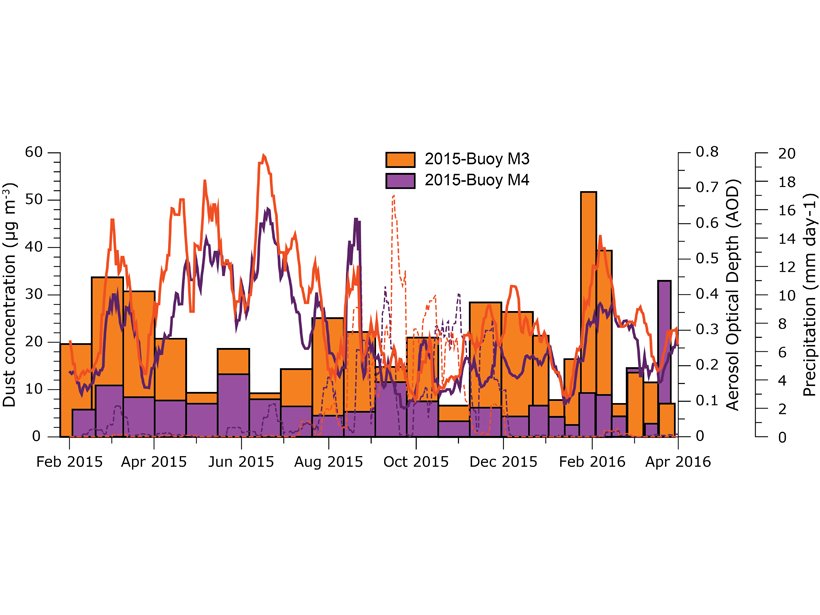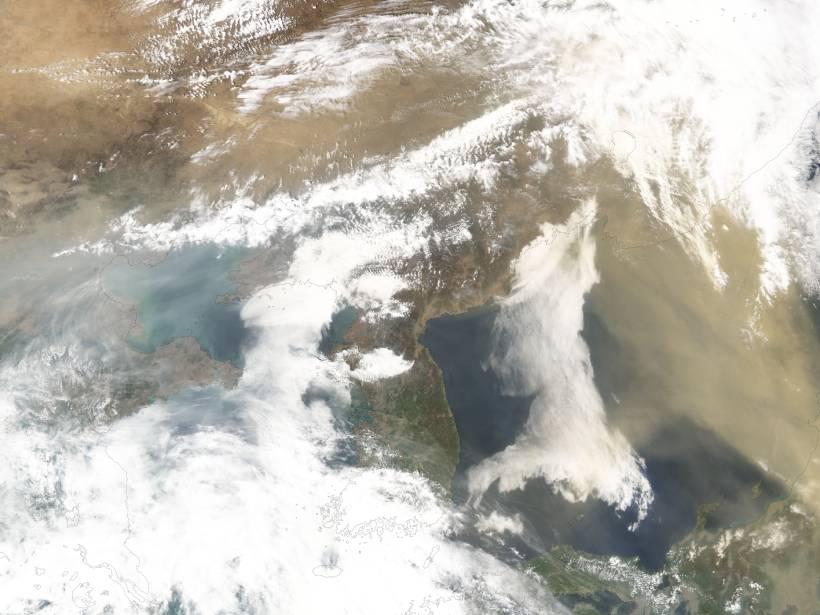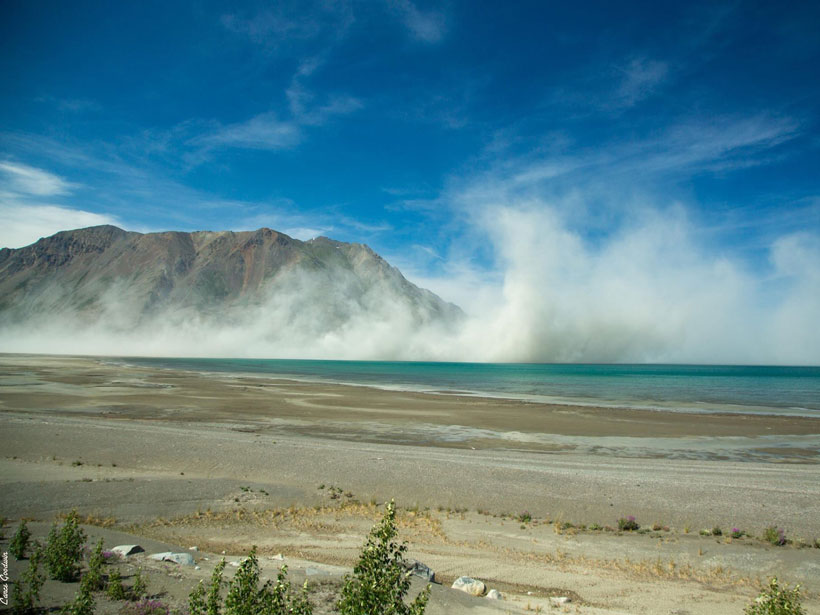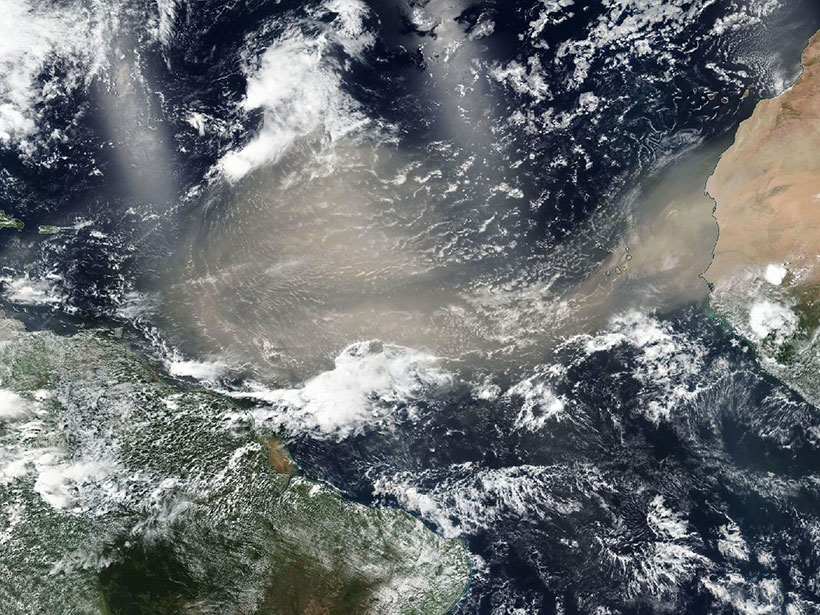The first time series of bi-weekly dust concentrations measured in-situ across the remote Atlantic Ocean.
dust
Integrating Data to Find Links Between Environment and Health
Several obstacles stand in the way of integrating social, health, and Earth science data for vital geohealth studies, but there are tools and opportunities to overcome these obstacles.
After the Dust Cleared: New Clue on Mars’ Recurring Slope Lineae
An imaging campaign after the 2018 planet-encircling dust storm on Mars revealed a significant increase in detections of enigmatic recurring slope lineae and new insights into how they might form.
Dust on the Wind
A new study confirms that an important wind system is shifting due to climate change.
Martian Dust Activities Induce Electrochemistry
Amorphous materials generated from sulfur and chloride salts by electrostatic discharge in a Mars chamber suggest widespread electrical processes during dust activities.
Dust from Receding Glaciers May Have Major Atmospheric Impacts
New research is helping scientists understand how Arctic dust created by receding glaciers affects local air quality and global climate.
Saving Lives by Predicting Dust Storms
In the southwestern United States, dust storms form suddenly, quickly reducing visibility to zero. A new warning system may allow motorists to avoid these deadly hazards.
Have We Got Dust All Wrong?
Scientists are challenging conventional notions of how dust particles are aligned; “everything we’ve so far hypothesized about the impact of dust on the atmosphere might be misplaced.”
Trans-Atlantic Dusts May Not Enrich Amazon as Much as Thought
New research indicates that nutrient loads delivered to South American ecosystems by dust originating in Africa are far lower than suggested in previous studies.
Saharan Dust Reaching the Americas Comes from El Djouf
The Saharan dust that crosses the Atlantic and fertilizes the Amazon may be coming from the El Djouf region between Mauritania and Mali, which is farther west than previously thought.










